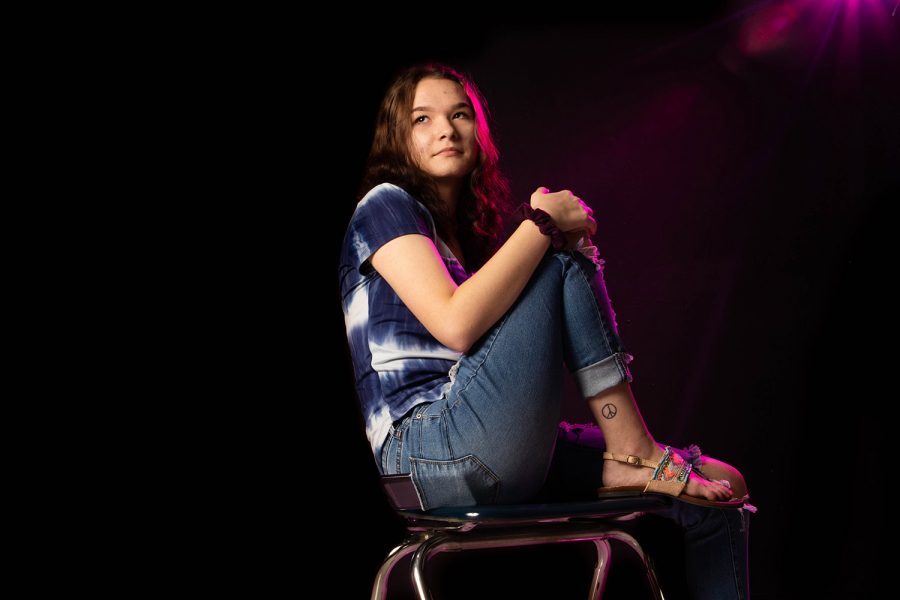A sudden inkling
Teens, tattoos and a less than peaceful past
Photo by Meredith Stanfill
Photo Illustration. Sophomore Trinity Rollins poses for a photo showing her tattoo. Rollins received her first tattoo, a black peace sign, earlier this year.
November 15, 2019
She glances down at her mind’s latest creation: a simple yet stunning black peace sign. It’s a symbol that speaks volumes with so few words, preaching love and acceptance while contained within a few centimeters of surface area. Although minimal in size and structure, it is an art in its own right.
Except there are a few key differences between sophomore Trinity Rollins’ creation from that of many imaginative minds. Her ink is permanent, her canvas is skin and her art is everlasting.
Rollins received her first tattoo, the aforementioned black peace sign, earlier this school year.
“I decided to get it because I think tattoos are exotic. Not a lot of people have tattoos,” Rollins said.
Another student sharing Rollins’ fascination with this unconventional artform is aspiring tattooist and sophomore Emma Tucker.
“It grabs the artistic element of art while also putting a lasting mark on somebody’s body forever. It usually gives somebody else some meaning to what their body is,” Tucker said. “They can have marks to show something that they’ll have forever to remind them of, like a family member’s photograph or dead pet’s name.”
Rollins’ inspiration for her inking, however, was on more of a philosophical level than sentimental.
“I like what peace signs look like and represent [because] they represent peace and love,” Rollins said.
Society’s view on tattoos, however, have been historically less than peaceful and loving.
“I’m pretty sure in the ‘50s no one could have them because it was unethical or not part of the social norm. But now it’s acceptable,” Rollins said.
The 1950s saw a heightened negative connotation with tattooism. They were seen on the arms of bikers gangs and criminals more than civilized populations, earning them the nickname “prison tat.” This unfortunate association amassed critics nationwide, with many rejecting body modifications due to its perceived lack of morality.
“It’s mainly religious people that think that they’re unpurifying their bodies by putting this ink on them,” Tucker said. “It’s just self expression, and I don’t think they should be limited to what they do to themselves by somebody else’s rules.”
Despite the trend’s lingering religious detractors, this fad of the ‘50s is far from fading into obscurity.
“It’s becoming more popular. There’s a stigma against tattoos especially at certain ages,” Tucker said. “But it’s becoming more of a popular thing now.”
This rise in popularity is demonstrated in America’s legal system, with states including South Carolina and Oklahoma lifting tattoo bans as recently as 2004 and 2006 respectively. Locally, Austin, Texas, was named the sixth most inked up city in the US.
As cities such as the Lone Star capital grow more attuned to the idea of clean slate skin adding color to its canvas, the public sees more diversity in the world of tattoos. No longer is body art synonymous with leather jackets and jail cells. Now, anyone can bare their own ink, from those confined by metal bars to high school homework. Its aggressive stigma is fading away faster than the first ink prick of many for Rollins and Tucker.
“If you don’t like my tattoo, it’s your problem. I’m not going to reply to [the judgement of others.] If you don’t like it then whatever. I’m going to walk away,” Rollins said. “I don’t care what other people think. If they don’t have a tattoo, whatever. If you do, OK.”















